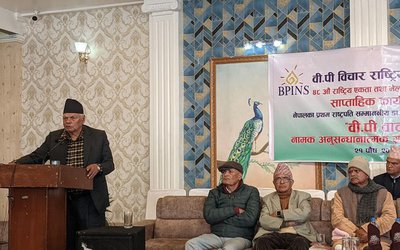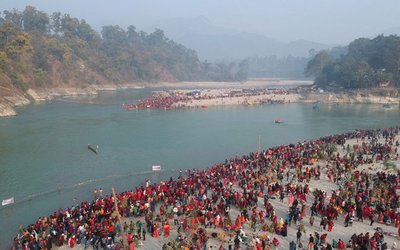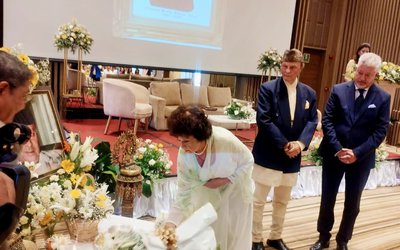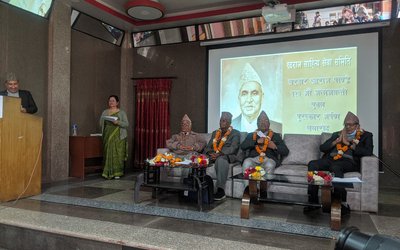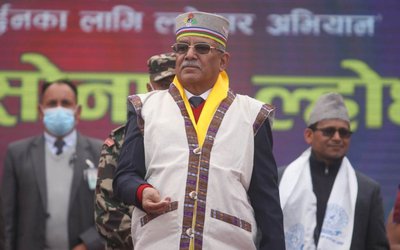
‘There is also in any history, the buried, the wasted and the lost’ - Muriel Rukeyser
Nepal, as we know it, has a fascinating history about its political structure and its civic culture. We have a story to share behind every piece of art, every stupa, every edifice and every street. Most of those who visit Nepal catch a glimpse of our history through these iconic temples, paintings, and people. But several tend to miss out on a vital aspect of our history being the legendary hippie era.
In a perfunctory flash, when I think about the word 'hippie', it reminds me of a bunch of lighthearted people with cosmological views radiating infinite positive energy. Their attire can be pretty much summed up to wearing colorful ombre t-shirts and dangling flower jewelry along with wooden necklaces that have the peace symbol carved into it. However, on a deeper understanding, the hippie subculture opposes artilleries carrying an eco-friendly attitude, embracing life philosophy and supporting sexual liberation. They reject the idea of built up institutions and demean low-class values. They also believe in the use of psychedelic drugs to reach to an altered state of consciousness and explore its limits.
Back in the 1950’s began the infamous hippie trail that started from the west and made many stops on its way - Europe, India, London, and Pakistan to name a few. The number of travelers multiplied as people from these places hopped in on this adventure too. This youth movement paved its way to Nepal during the early 1960’s and stayed for almost a decade. These world travelers had an enigmatic connection with the natural beauty and also claimed to have found the best quality of ‘magical’ substance in the stores.
The ideal fantasy would be to have an easy access to world-class quality drugs such as marijuana and hashish at a very cheap price. This is exactly what these wanderers had stumbled across in our country at the time and what made the whole situation even better was that these drugs were sold legally by the government-run stores itself! It is during this period that Nepal scored it’s name as the ‘Weed Capital’, ‘Hippie Haven’ and ‘Hippie Nirvana’.
Freak Street (now known as Jhochhen Tole) was the heart of this business that drew many travelers in search of legal cannabis. This street comprised many government licensed stores that sold the finest drugs at a ridiculously cheap price. Far from the judicialized rules and a regulatory government was Freak Street that had created a small little world in itself for those who wanted to cut out from the outer negativity and frustration to find enlightenment. They indulged themselves into the Nepali art, architecture and the unique style of living for spiritual peace.
The decline of this trail began due to several reasons such as the Yom Kippur War, the Lebanese Civil Rights War, and the Iraq-Iraq War. Unfortunately, the trail finally died out in the late 1970’s when a political shift had caused the country to deport these travelers to India and ban hashish completely. This action was a consequence of a directive by the government of the United States of America. The directive also imposed a stringent rule about the clothing and appearances, which spurred bitterness in the heart of these hippies causing the journey to end.
The drug business stores were quickly replaced by conventional businesses, trekking agencies, cycle stores, art galleries, ethnic jewelry shops and restaurants. Currently, Thamel is another street in the Kathmandu Valley, which has stolen the show and gains more popularity and attention than the Old Freak Street. Unable to revive its position as the most glamorous street of the valley, it is now nothing more than a magnet that attracts enthusiasts.
Gaetano Salvemini once said and I quote. ‘The historian has before him a jigsaw puzzle from which many pieces have disappeared.’ Nepal has a beautiful yet twisted history. The hippie era is something that most don’t tend to share with the young generation as it might be inappropriate but I believe it's necessary to pass down these details. In my sense of understanding, the words ‘hippe’ and ‘settling down’ do not go in the same sentence together, but the charm of our country caused many to permanently settle down in the valley even after the 1970’s. Here is a less relished and partially missing piece of information from our history that I’d like to put back together in the puzzle.

Ayushi Sureka
Sureka is an intern
- Miss Nepal 2019 Anuska Grabs Crown
- May 23, 2019
- It Is Our Compulsion To Choose Risky Way: Rescued Women
- May 11, 2019
- Anuska Shrestha Declares Miss Nepal 2019
- May 10, 2019
- Ten Things To Do In Kathmandu
- May 25, 2018
- Ageno Hospitable Restaurant
- Jun 08, 2017

